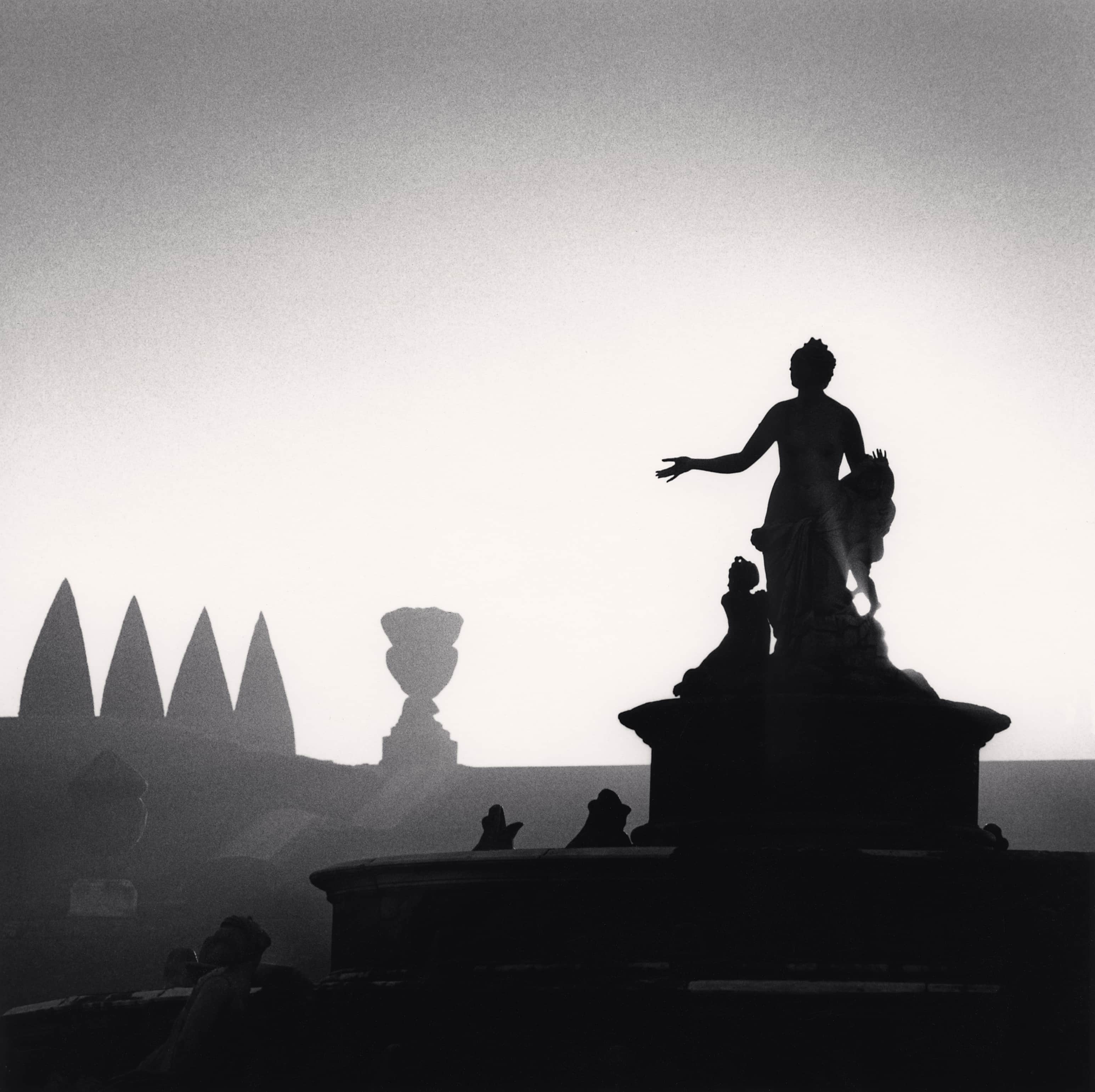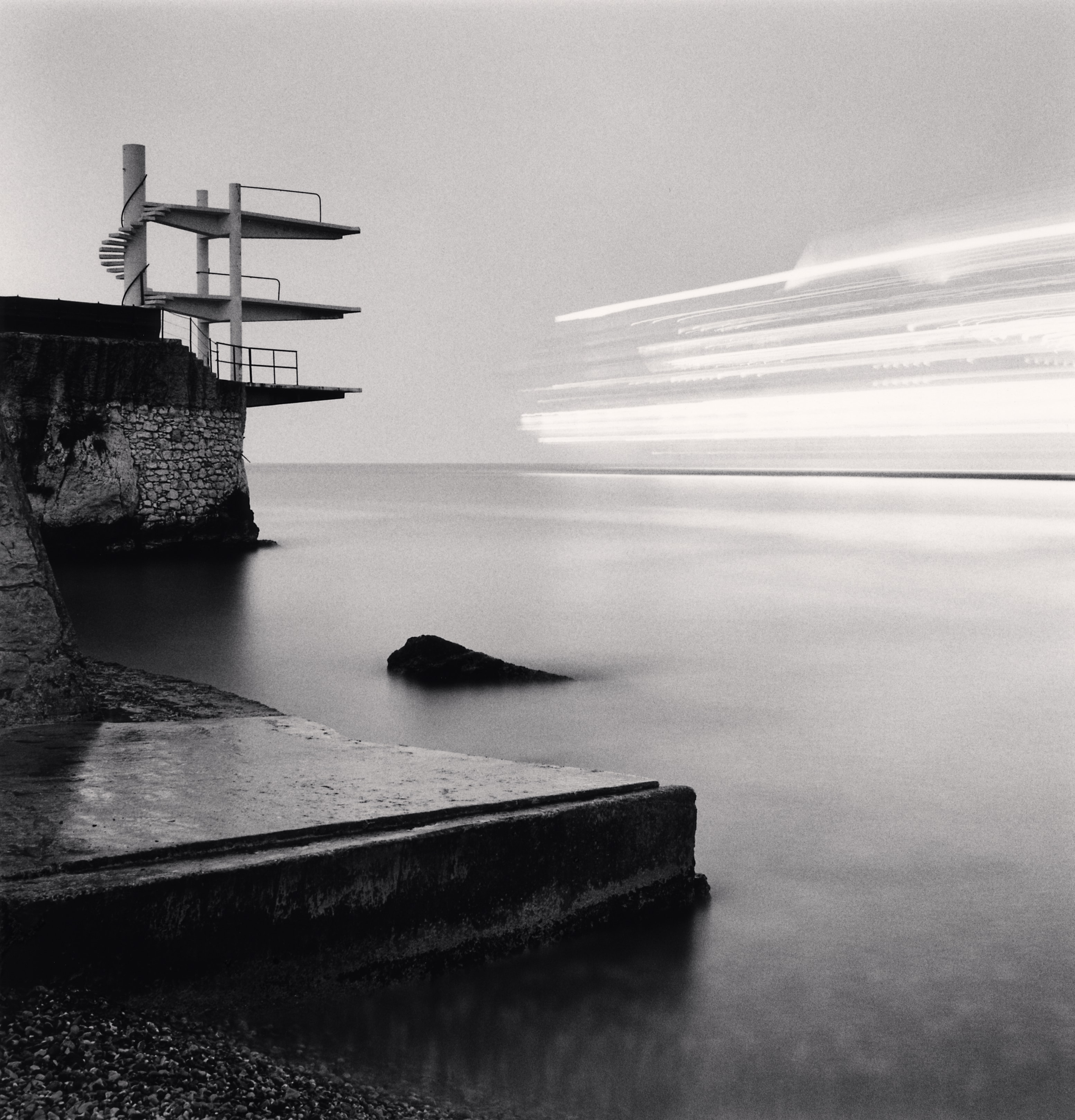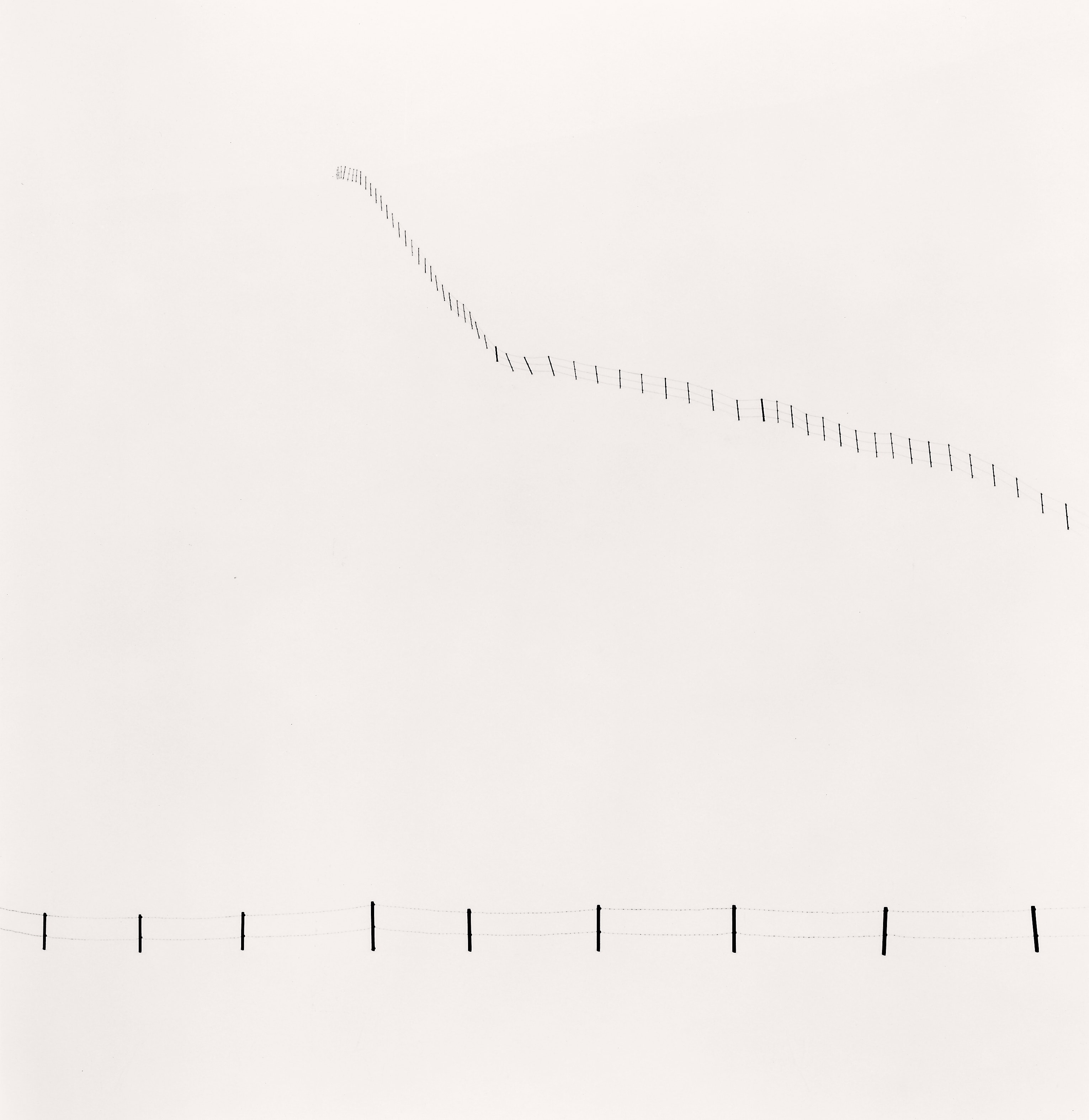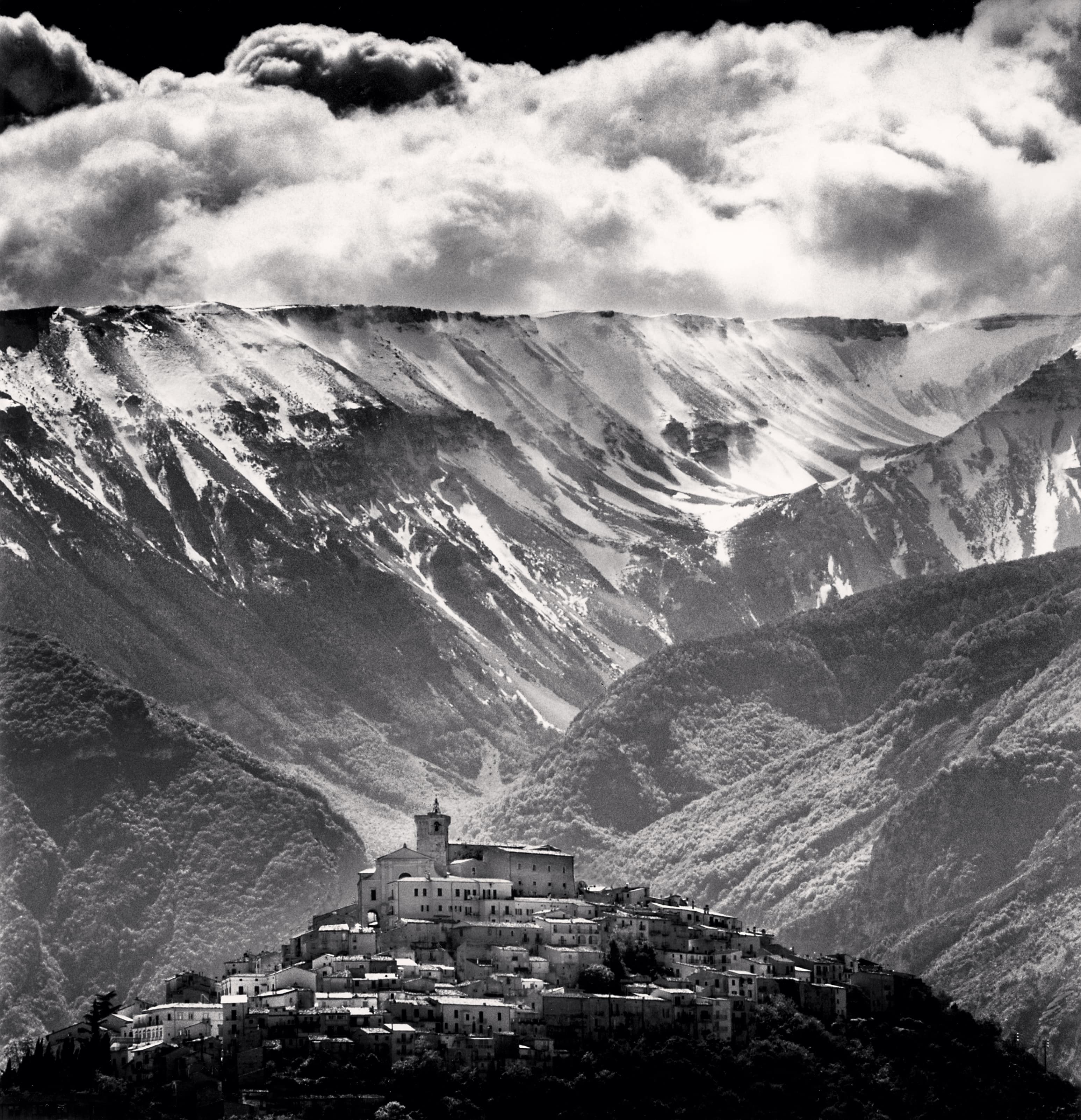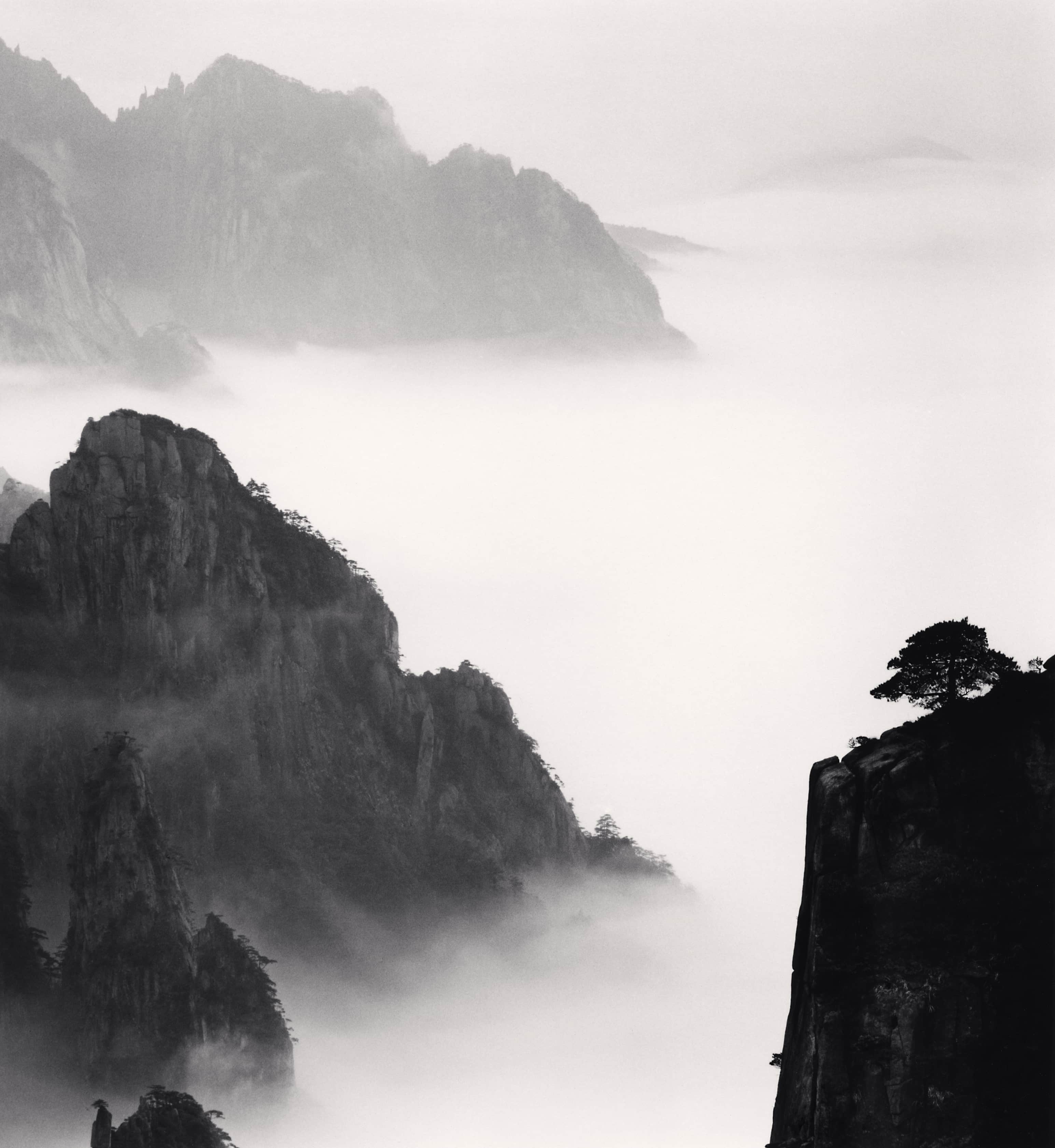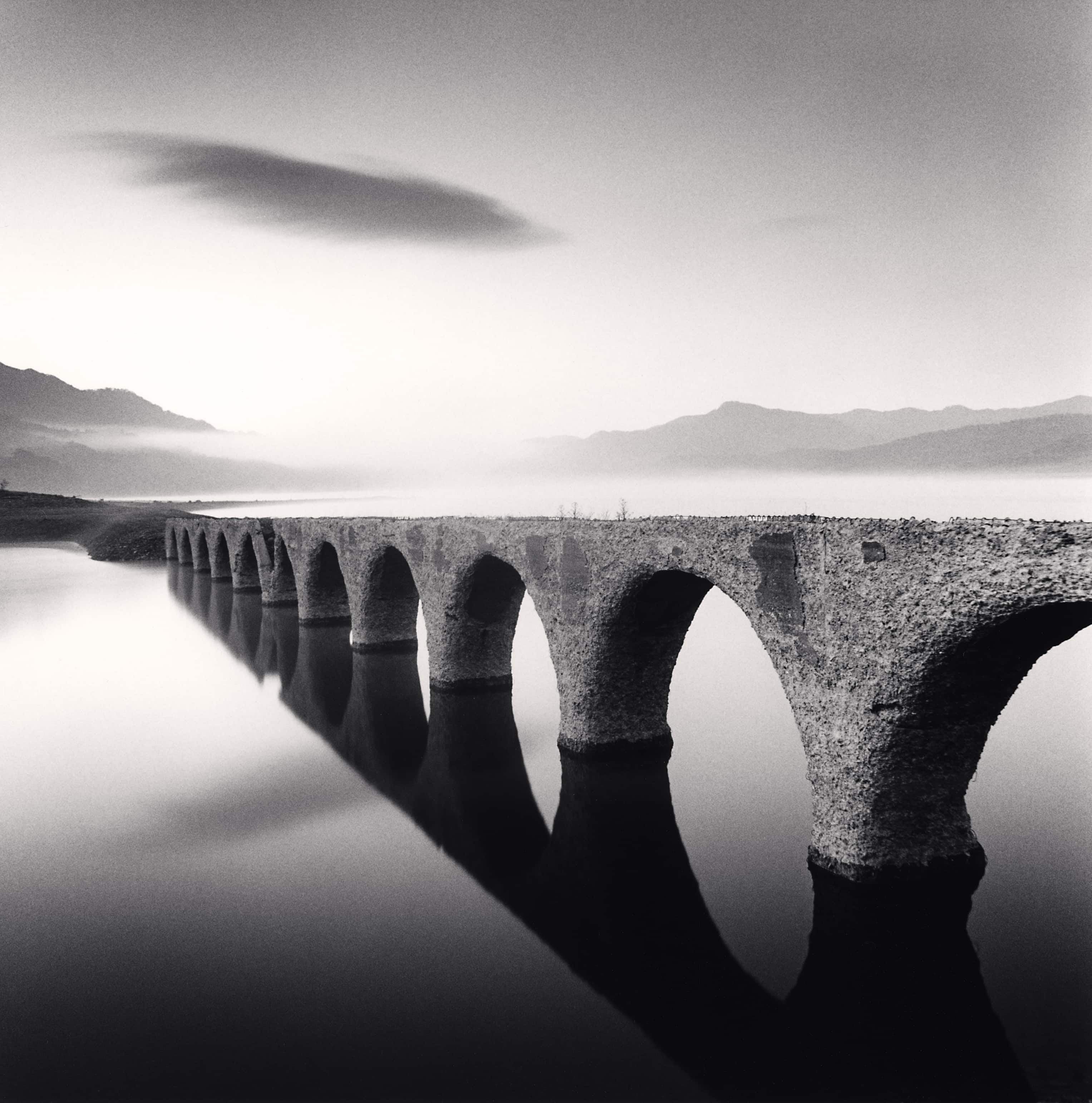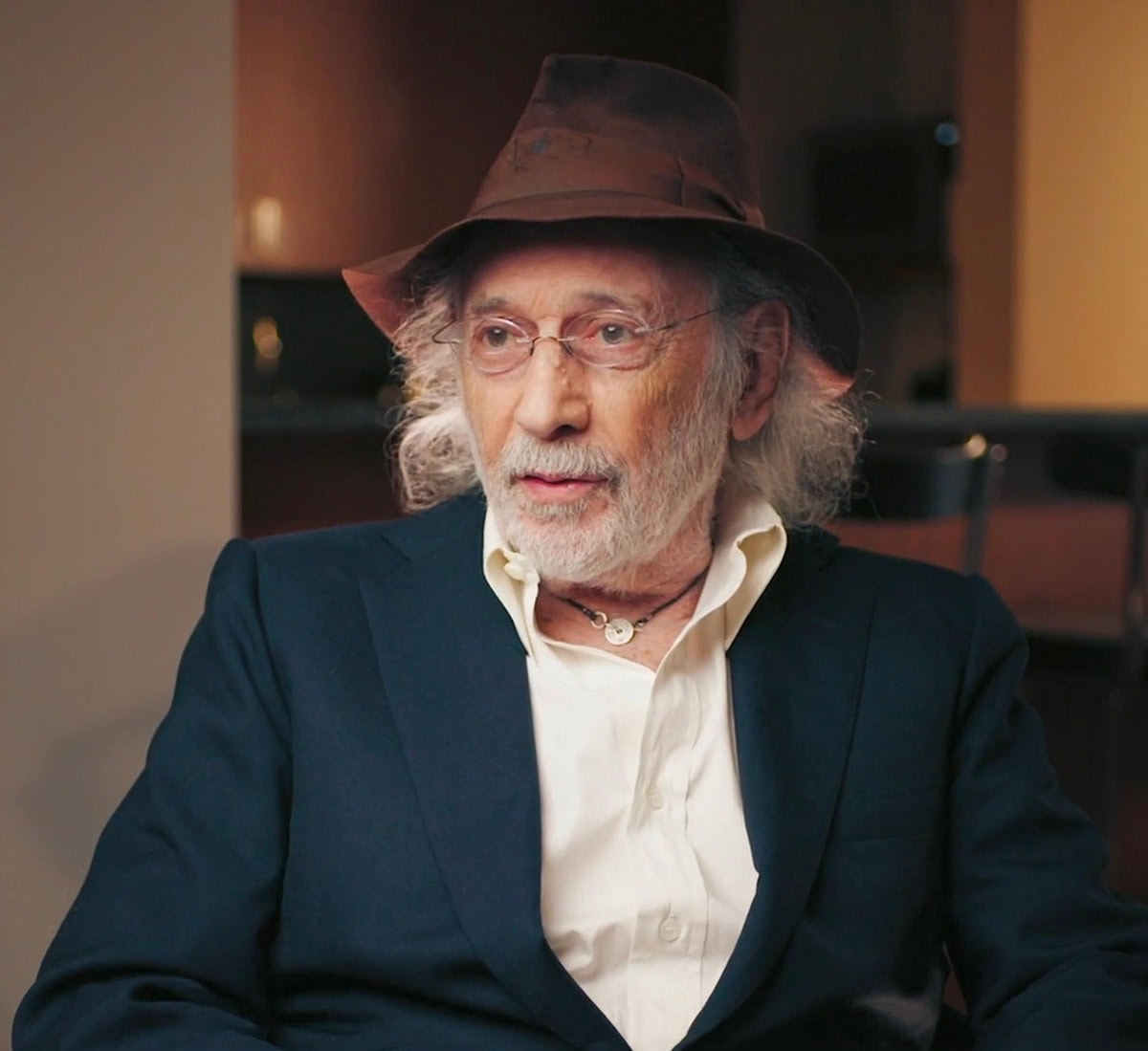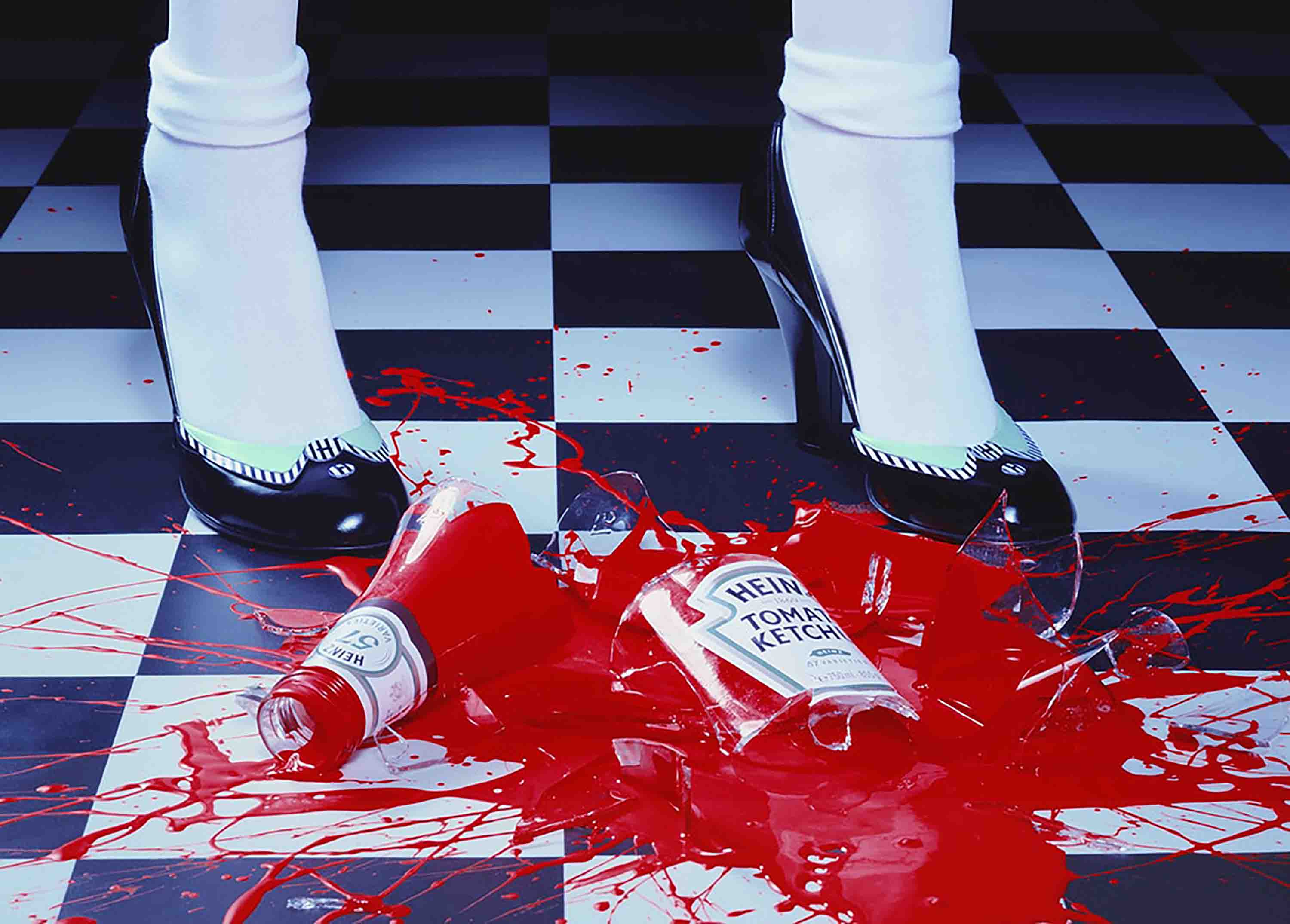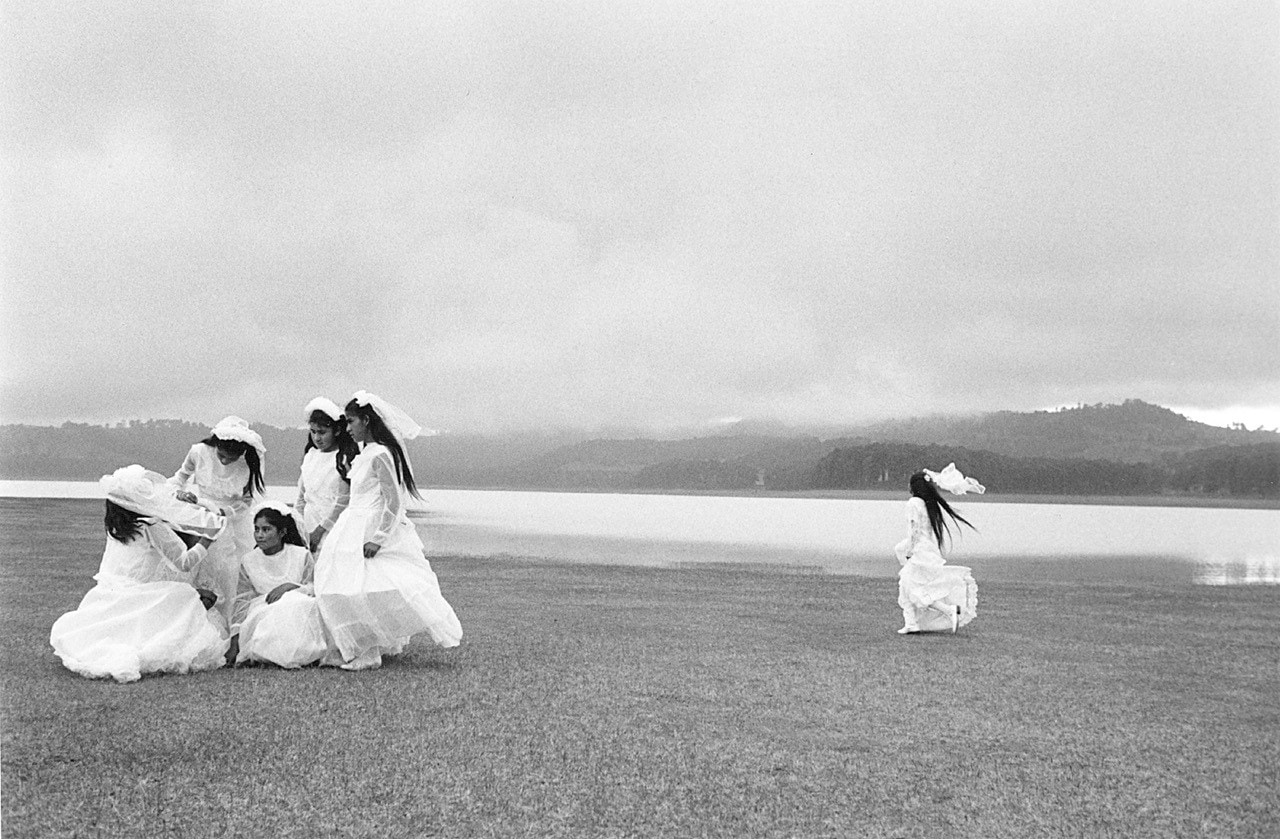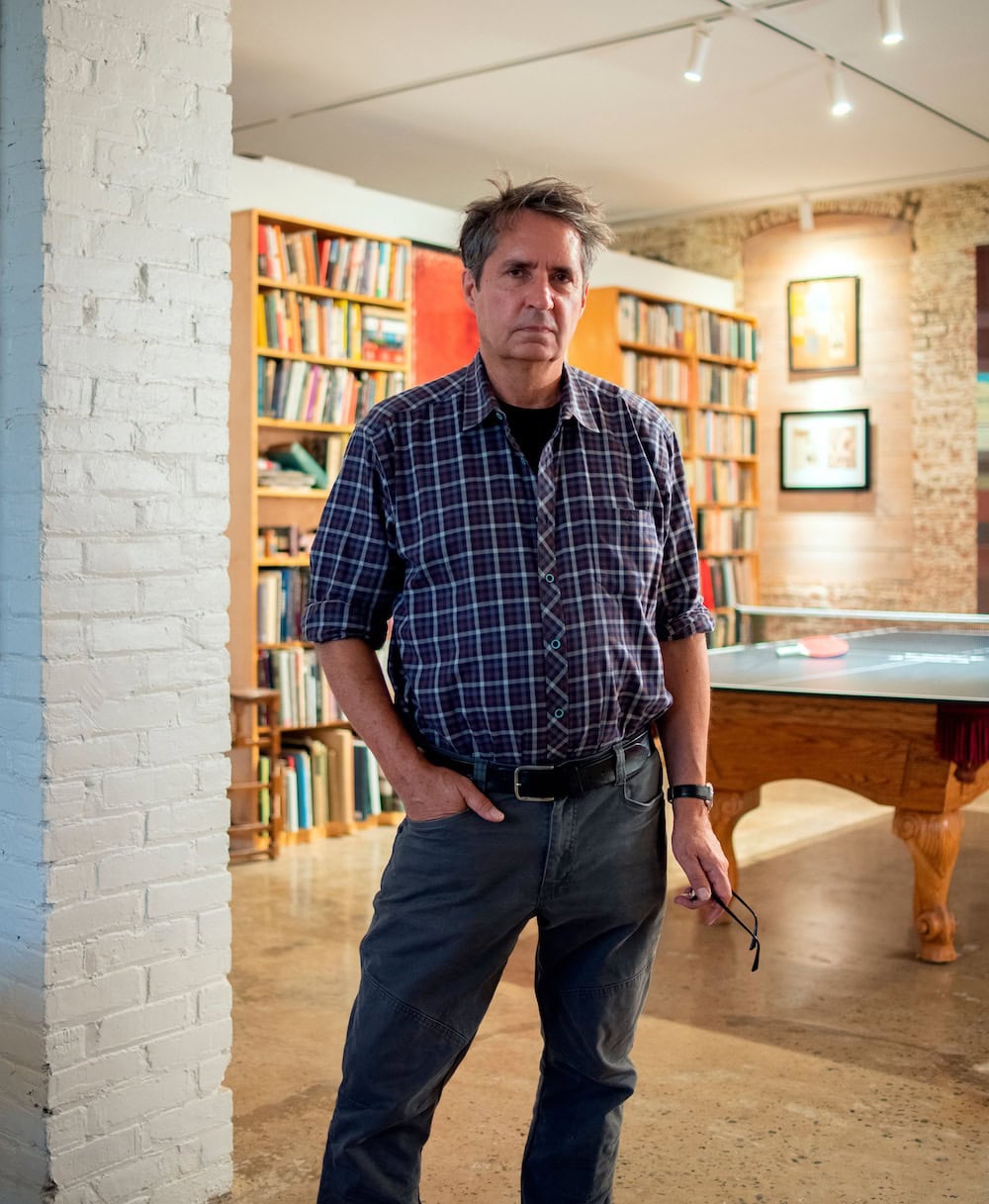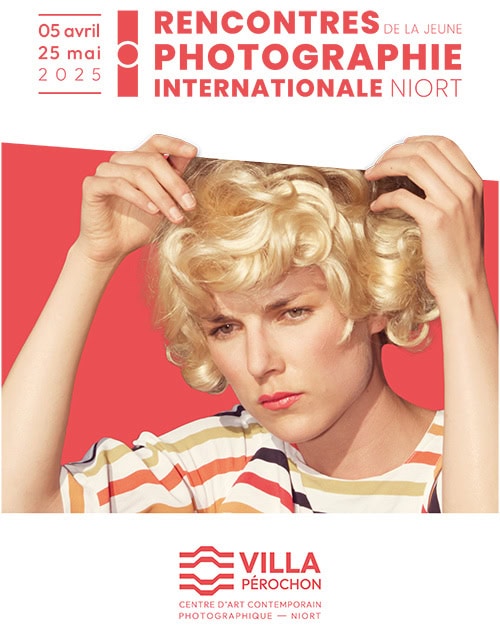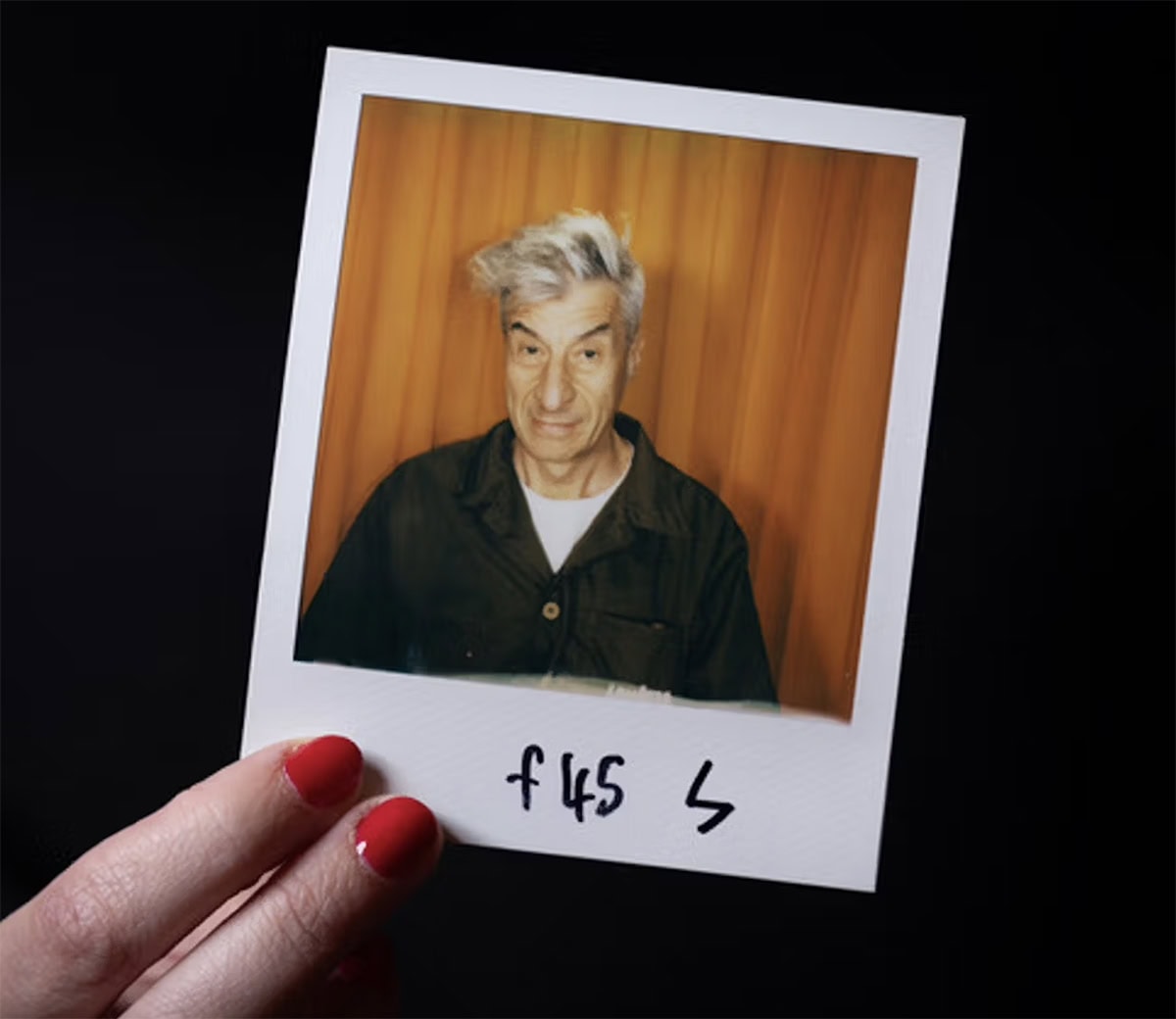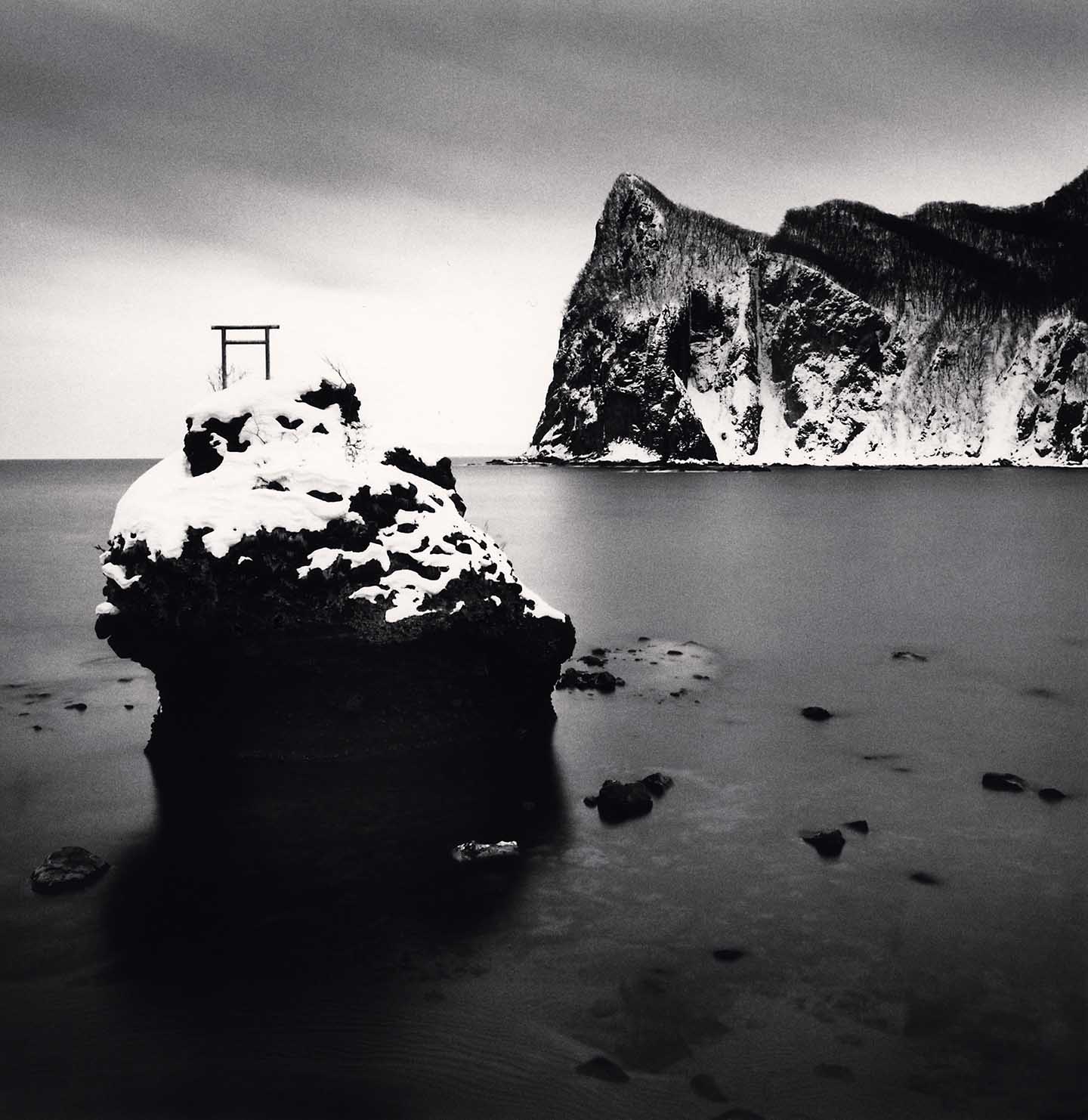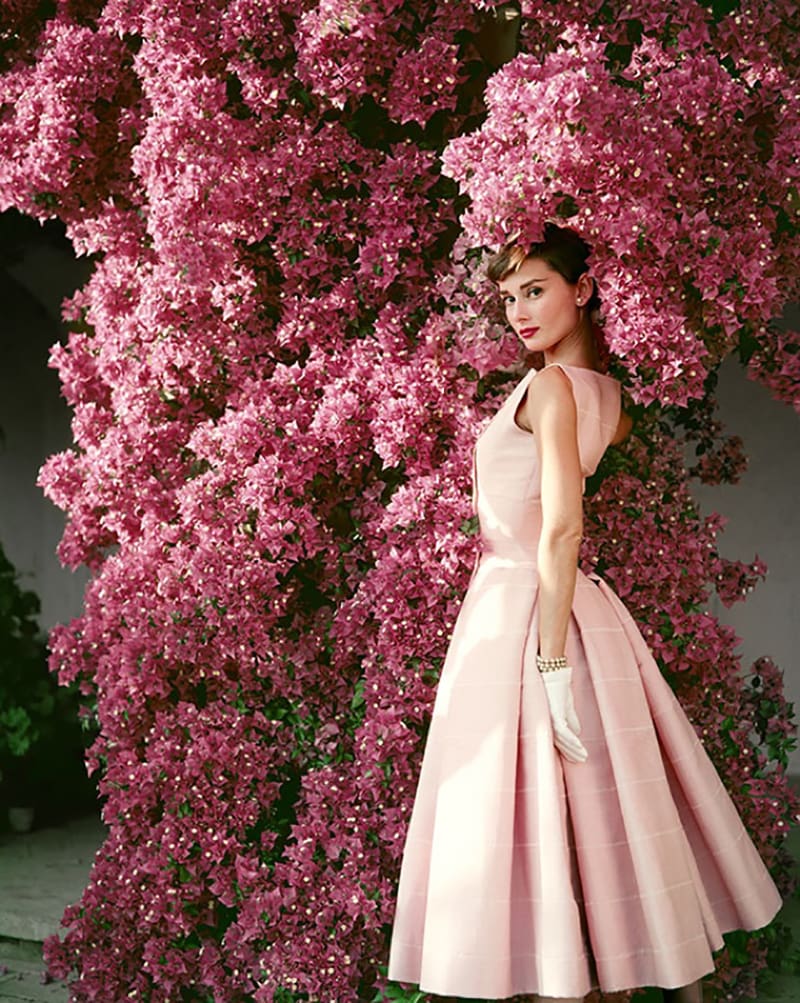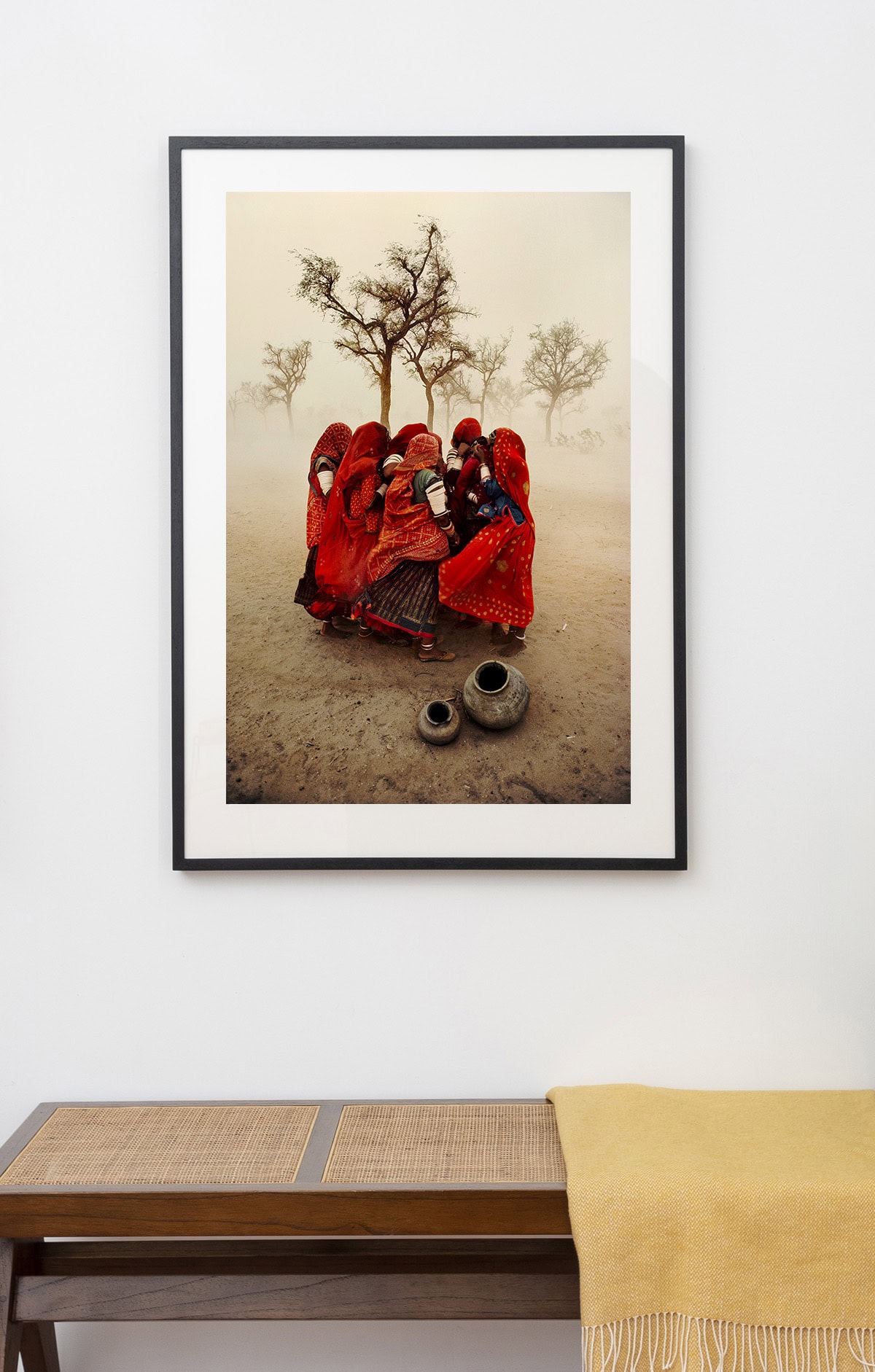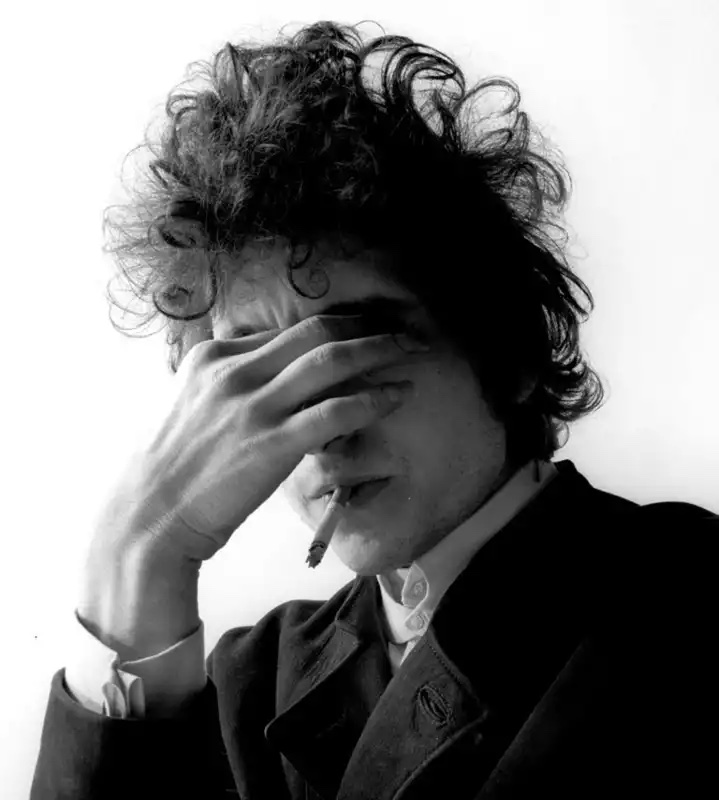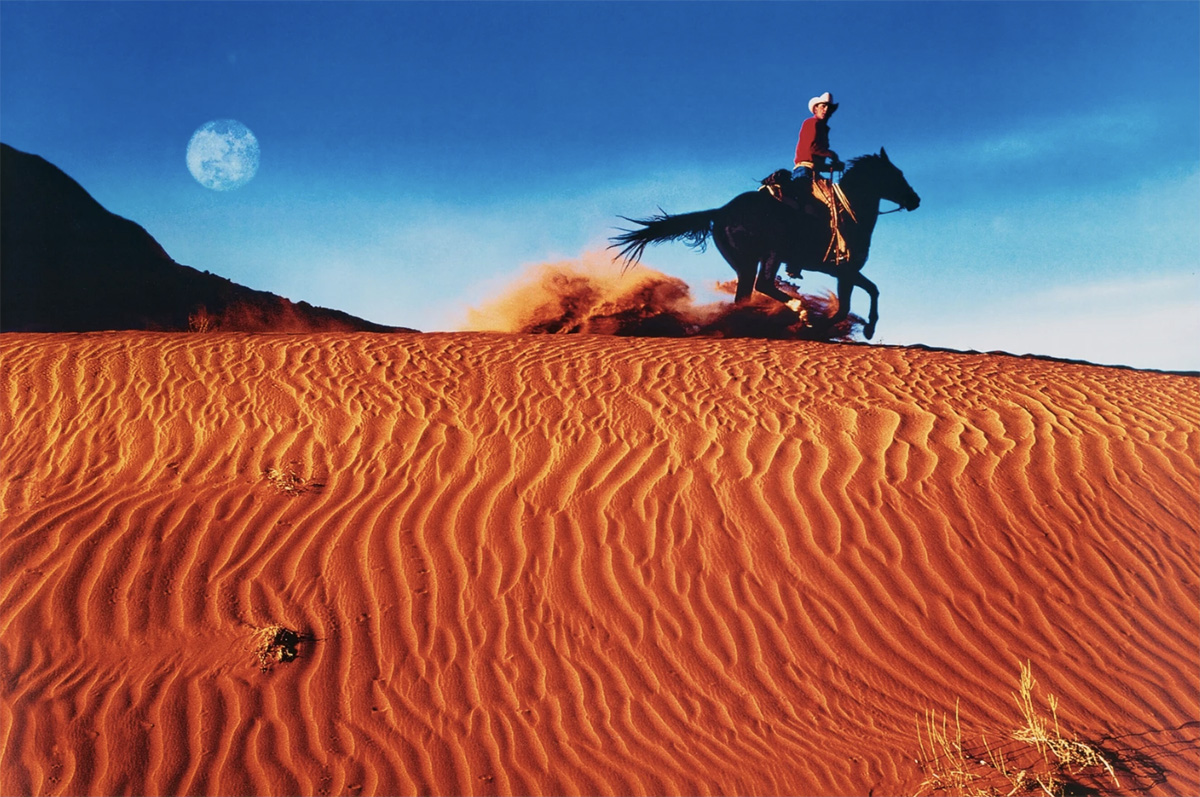Artists in Lockdown: Michael Kenna on Creativity and Routine
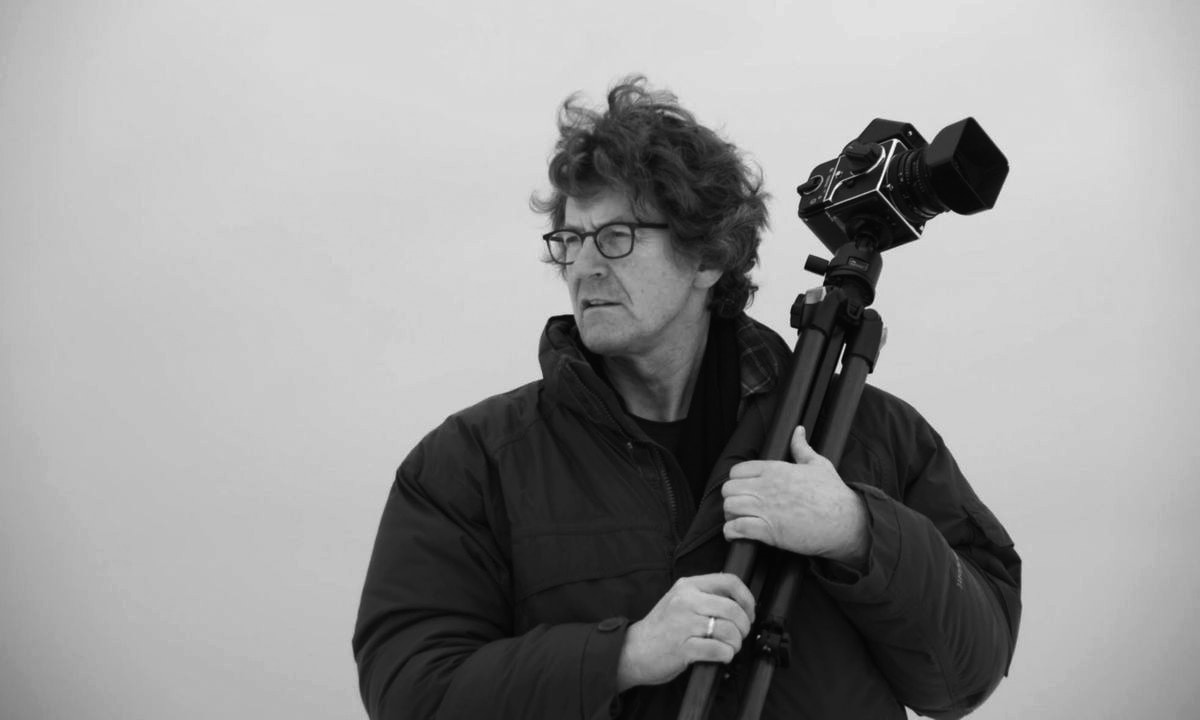
30th June 2020
SOL: WHAT TIME DO YOU WAKE UP?
MK: For the most part I wake with the morning light, which is, of course, earlier in Summer and later in Winter. Over the year my wake up possibly averages out around 5.30am. When I am photographing it’s a bit different as I set an alarm clock at least an hour or two before dawn. Jet lag plays a part in all of this too – after international travel my internal clock is all over the place- sleeping and waking become unpredictable.
SOL: WHAT DO YOU EAT FOR BREAKFAST?
MK: Coffee works for me, to get the day started well! I don’t usually eat until mid to late morning, and then there are a wide assortment of possibilities: toast, eggs, cereal, doughnuts, sushi, cold pizza, yoghurt, fruit, etc. If I am home, my wife makes sure I eat healthily, but if I am on the road photographing, I’ll usually eat what is available.
SOL: DESCRIBE WHERE YOU PRODUCE YOUR WORK, AND WHY YOU CHOSE THAT SPACE.
MK: I have options all around the world to photograph, so it’s a bit difficult to describe where I choose to work. I am highly fortunate to have had the opportunities to travel in many countries. Now with the Covid virus rampant, that has become impossible. However, looking back to only a matter of months ago, operating with a backpack of cameras, a tripod and a bag of film, means I can be quite flexible when moving around. If I had to choose only one place, with due respects to all the many wonderful places that I have already photographed, and to the places where I will hope to potentially photograph, I would probably choose the Northern Japanese island of Hokkaido as a favourite place to work.
My first trip to Japan was in 1987 and I was hooked immediately. There are characteristics of the Japanese landscape that resemble and remind me of my homeland of England. Japan is a country of islands, surrounded by water. It is a place that has been lived in and worked on for centuries. It is geographically small and spaces are quite intimate in scale. I feel there is a powerful sense of atmosphere that resides in the Japanese soil, and as I like to photograph memories, traces and stories, I feel strangely at home wandering around this country. If one spends time in Japan, I think it is impossible not to be influenced and seduced by the Japanese sense of esthetics, kanji characters, minimalism of artwork, and reverence of certain traditions.
Another major work-space is my traditional darkroom in our home. The location makes it very convenient as I can be with family and then disappear into my cave quickly and easily. Sometimes, I spend twelve straight hours working in there, listening to music or audible books as I print. I have always loved printing and prefer darkroom printing to digital computer printing.
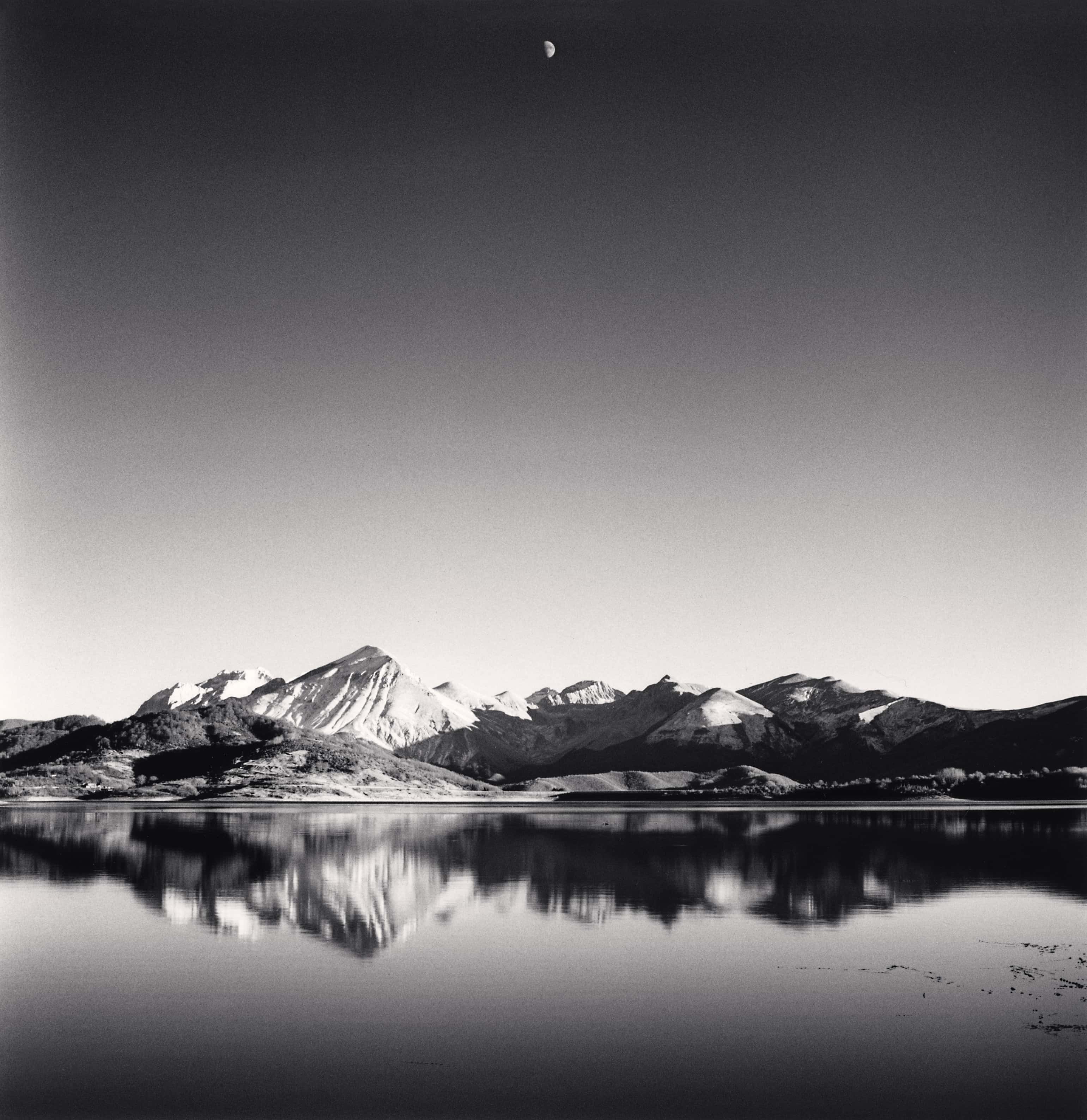
SOL: DO YOU HAVE A PARTICULAR DAILY ROUTINE THAT HELPS YOU WORK?
MK: My daily work routine varies and depends whether I am away photographing, at home printing or in the studio occupied with other aspects. When away photographing, I try to make the most of every minute. I photograph when I can, often before dawn and well after dusk. I sometimes leave cameras exposing throughout the night. I work on the basis that I might never return to the same place ever again. If I do return it will have changed. I try to make the most of the time I am given in any one place. My routine is not usually fixed and so it is not necessary to repeat any particular schedule.
At home it is different as there are children with fixed schedules and necessary routines. There are family activities, and as many dates with my wife as possible. Still, each day may have a basic routine, but no day is the same as another. My work has so many aspects to it that I have to go with the flow each day as to what needs to be prioritised.
SOL: WHERE DO YOU GO FOR YOUR CREATIVE SPARKS?
MK: All over the world and right here at home.
SOL: WHAT ARE YOU CURRENTLY WORKING ON?
MK: I have just completed a project on the Buddha, which was published as a book by Prestel in May. The images in the book were made on my various wanderings over the past thirty years in Cambodia, China, Hong Kong, India, Japan, Korea, Laos, Myanmar, Thailand and Vietnam. There are also Buddha studies from countries I have not yet visited such as Afghanistan, Nepal, Pakistan and Tibet. These images were made in Paris at the Musée National des Arts Asiatiques-Guimet. Hopefully, the prints will eventually be exhibited when galleries reopen. Unfortunately but understandably, Covid has effectively necessitated the postponement or cancellation of all the scheduled exhibitions and book signings for the time being.
Having just finished that project, I am now busily printing negatives from a series I started in 2006 on the River Po in Northern Italy. Over the years I followed the length of the river, from its source in the snowy mountains of Monviso, Piemont to its grand finale in the Po delta where it flows out into the Adriatic Sea. So far I have made 53 prints and am hoping to get to a round 100 before editing the selection back. The book – Il Fiume Po – will be published by Corsiero Editore this autumn and if we are Covid free at that time, an exhibition will commence in Parma, move to Gaustalla and then travel onwards.
SOL: WHAT DO YOU DO WHEN YOU NEED TO RESET YOUR MIND?
MK: I love long distance running. For many years this was a perfect way to reset. Alas, my knee has now revolted so I have replaced that activity with walking, rowing and biking. None are quite as effective but I think solitariness while engaged in a physical activity is the basic equation. I also like to play the guitar and sing a few songs, perhaps draw, read a book, drink some wine, or wander around photographing.
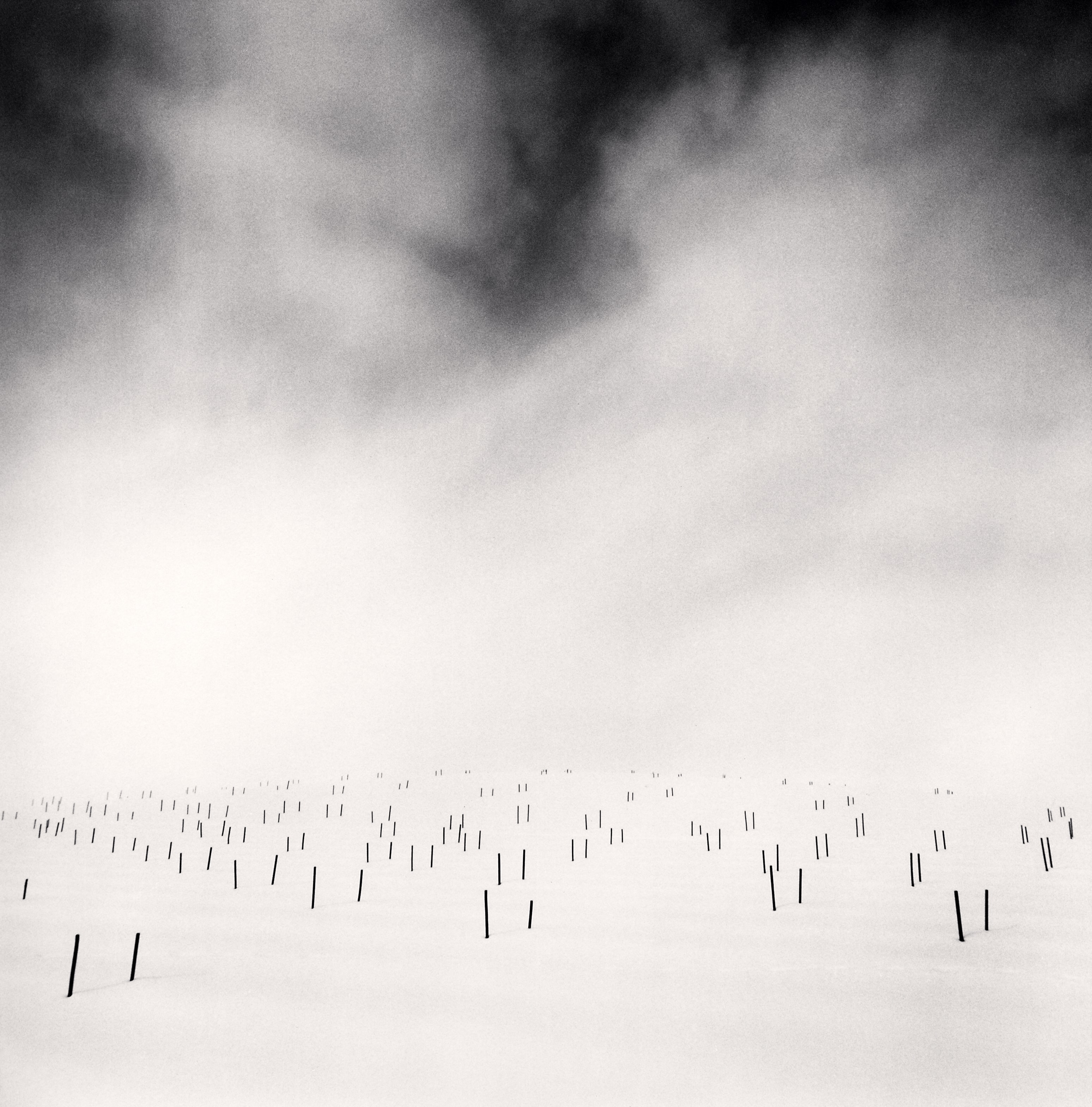
SOL: WHO WAS YOUR MOST IMPORTANT MENTOR OR INSPIRATION?
MK: Born and brought up in Northern England, I come out of a European tradition and my early photographic masters included Eugène Atget, Bill Brandt, Mario Giacomelli and Josef Sudek, amongst others. These photographic giants, along with their American counterparts: Ansel Adams, Ruth Bernhard, Minor White, Alfred Steiglitz, and others, have influenced me greatly. I suppose they are all romantics at heart, particularly the Europeans, all concerned with photographing a feeling as much as documenting external reality.
Eugène Atget’s dedication to photographing in and around Paris all his life taught me that nothing is ever the same, the same subject matter can be photographed in many different ways and conditions. Bill Brandt took me back to the industrial towns in the North West of England. He showed me that beauty is in the mind of the beholder. His sense of drama, even melodrama, his use of atmosphere and willingness to completely change reality into an abstract and graphic print, all helped my own vision. Mario Giacomelli’s sense of powerful two-dimensional black and white abstraction and design profoundly affected me. I loved his liberation from the traditional ‘fine art photographic print’. Josef Sudek taught me that light can emanate from within the subject matter rather than only illuminate the exterior. I actively searched out places where these photographers had worked. I studied their camera angles and techniques. They all guided the development of my own vision.
When I moved to the USA I was extremely fortunate to meet the photographer Ruth Bernhard. At that point, I had thought that I was a good photographic printer. I had printed my own work and that of a number of other photographers along the way. However, Ruth gave me new insights into the process. The work I did with Ruth transformed my own printing style. I was now able to print negatives that I had previously given up on.
Ruth often said that her role of teacher was far more important than her reputation as a photographer, and my decade with her was priceless. I cannot over estimate her influence on both my life and work. As a young photographer trying to navigate in the extremely puzzling world of galleries, publishers and commercial agents, Ruth was a guiding light. “Today is the day” was her mantra, and her determination to live in the present, to appreciate every moment, to always say yes to life, has left an indelible impression on me.
SOL: WHO DO YOU SPEAK TO WHEN YOU NEED A SECOND OPINION OR WHO GIVES THE BEST FEEDBACK?
MK: I remember reading an inscription on a piece of Italian porcelain in a San Francisco North Beach shop window: mia moglie ha sempre ragione: my wife is always right! In the case of my wife, Mamta, I have found that to be completely accurate. If I have doubts over an image I can usually show it to her and can tell instantly. Her transparent reaction has become a litmus test for me.
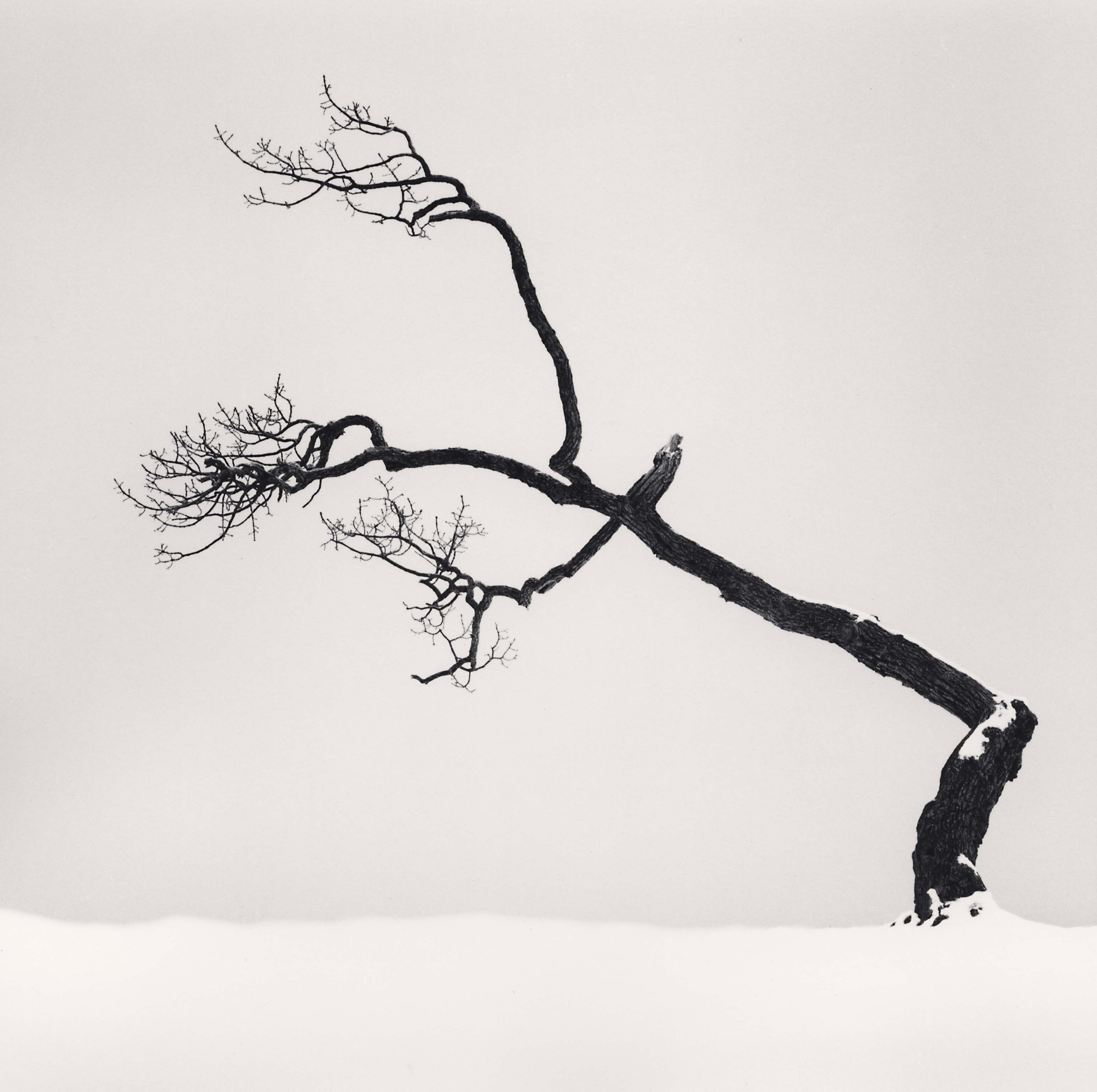
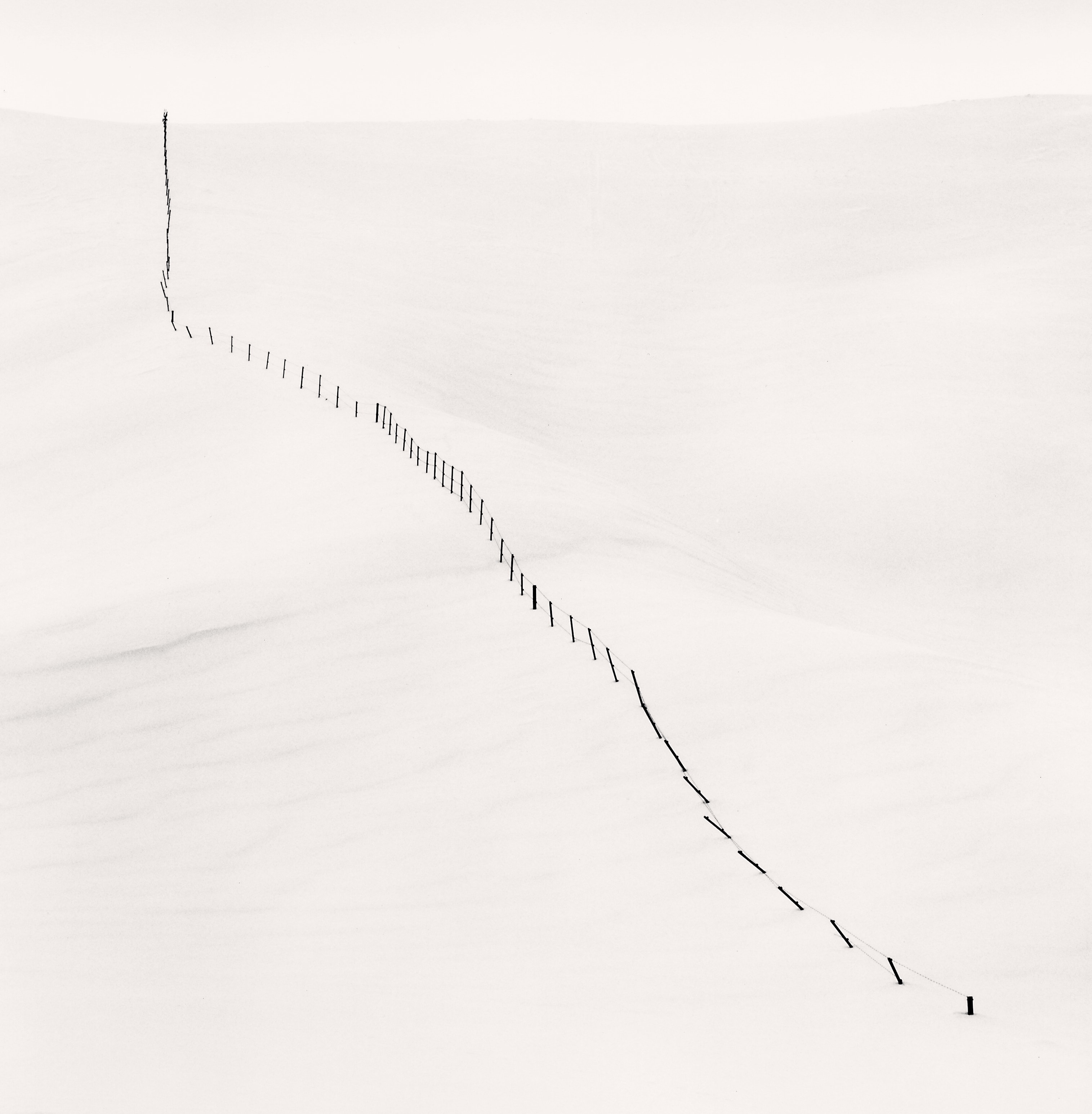
SOL: WHAT’S THE BEST ADVICE YOU’VE EVER BEEN GIVEN?
MK: There is SO much advice out there that, at least for me, it’s impossible to come up with a single piece. A few words of wisdom which still resonate with me include: ‘let yourself be silently drawn to that which you dearly love. It will not lead you astray,’ by Rumi; Paul Tillich said, ‘doubt is central to faith,’ and as Stephen Covey puts it, ‘the main thing is to keep the main thing the main thing.’
SOL: IF YOU WEREN’T AN ARTIST WHAT WOULD YOU DO?
MK: If I could be a teenager again, I think that I might like to seriously study music and learn to play some instruments. My current and past dabbling on the guitar shows me how little I know and it is a constant source of frustration that I haven’t invested the time and effort over the years to do better. I have no idea if I have any potential to be a musician – it is probably all wishful thinking, but in my day dreams and sake inspired karaoke bar performances in Japan, I could imagine belting out an amazing rock and roll number at a packed Wembley Stadium, or accompanying the Three Tenors in an incredible operatic production!
SOL: HOW DO YOU SWITCH OFF FROM WORK IN THE EVENING?
MK: There is a natural progression from work mode to family mode which usually occurs pre-dinner time. Sometimes an activity is involved – taking the children to Taekwondo lessons, ensuring their homework is done, going to the shops for last minute necessities, having a shower if I have been in the darkroom all day, opening a bottle of wine, setting the table, etc. Dinner is the usual switch off moment and then the focus is on the evening winding down to bed-time and preparing for the next day, with all the accompanied rituals and routines.
SOL: WHAT BOOK ARE YOU READING RIGHT NOW?
MK: Killing Commendatore by Haruki Murakami. Unfortunately, I am near the end, but I don’t want to finish!
SOL: WHO IS THE OTHER ARTIST WORKING TODAY THAT YOU MOST ADMIRE?
MK: This is THE most difficult question for me as I find that as time passes I have become more and more of a hermit. I rarely attend museum or gallery exhibitions, am not up to date on what is happening in the art world. I think I will punt on this question!

SOL: IF YOU COULD HAVE LUNCH WITH ANY ARTIST FROM ACROSS TIME, WHO WOULD IT BE AND WHY?
MK: At first, I considered Dali, Giacometti, Hockney, Michelangelo or Turner – a pretty diverse selection. Then, I thought how wonderful it would be to meet the photographers that I have admired over the years: Adams, Atget, Brandt, Giacomelli or Sudek. I quickly realised that I couldn’t make a choice, there are far too many possibilities. I also came to the conclusion that if I had a choice to have lunch with any artist, I would prefer to be with my old friend Ruth Bernhard. I could imagine going again to the little Japanese restaurant, Ten-Ichi, on Fillmore Street, San Francisco and chatting about old and new times. I would love to see Ruth again, and when it comes down to it, spending time with a loved one seems to me to be far more preferable than chatting with somebody I don’t know, no matter how important or fascinating they might be.
SOL: WHAT ARE YOU MOST PROUD OF IN YOUR CAREER?
MK: My feeling is that there are an infinite amount of photographic possibilities in this world. Decisions and choices have to be made as to what is meaningful and personally significant, and my personal interest in memories, time and change often dictate what attracts me to photograph. Sometimes, I think we choose some projects and others choose us. Looking back, I would include the photographs I made in the World War II Nazi concentration camps as being amongst those that I am most proud of. During the late eighties, in Europe, the division between East and West was crumbling. For various logistical reasons, at that time I travelled to Czechoslovakia, East Germany, Latvia and Poland, which were previously very difficult to reach. The concentration camps I found in these countries were potent with atmosphere and remnants of the past. I just knew that I had to photograph all that I could find before they changed. I was not Jewish and had no immediate connection to the camps, so this drive to document was very puzzling to me. I had little time to question and I decided to proceed with humbleness, respect, sadness and a fierce determination to do the best I could. I felt that I was in the right place at the right time with the appropriate training and vision. I knew that I had good and sincere intentions and I learned that sometimes it is best not to question too much. For over ten years I searched out and explored all the camps I could. Eventually, I donated 600 prints and 6,000 negatives, along with their copyright interests to the French Ministry of Culture. A book was published and exhibitions arranged. This project became my personal contribution to the Holocaust memory. There will be another exhibition of this work at Musée de la Résistance Nationale, Champigny-sur-Marne, France, virus permitting, later this year.
FeaturedMichael Kenna
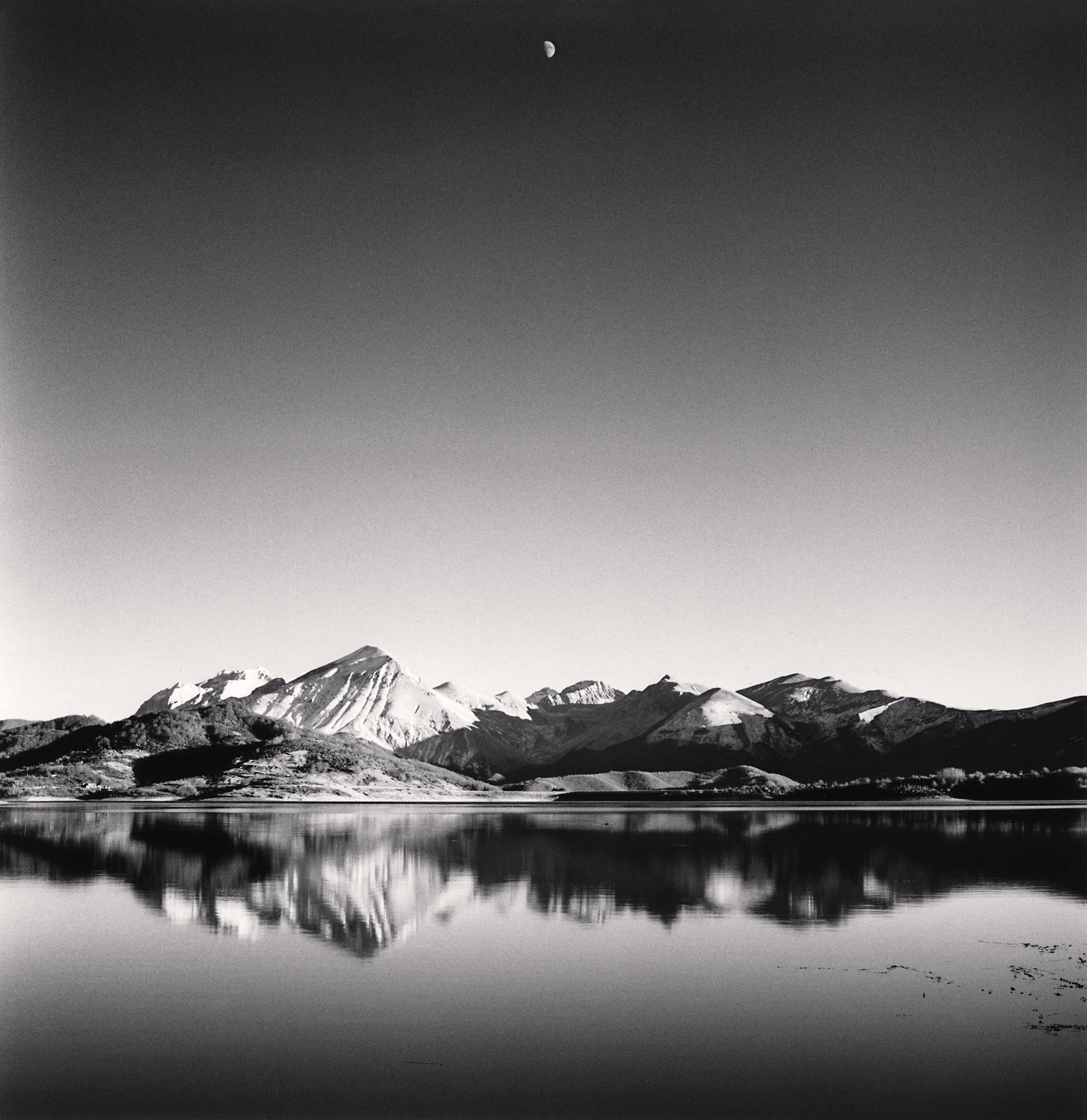
FeaturedMichael Kenna
The ArtistMichael Kenna is one of the most acclaimed landscape photographers of his generation. His photographs have been the subject of some 50 monographs and are held in the collections of over 100 museums worldwide.
Artist Page